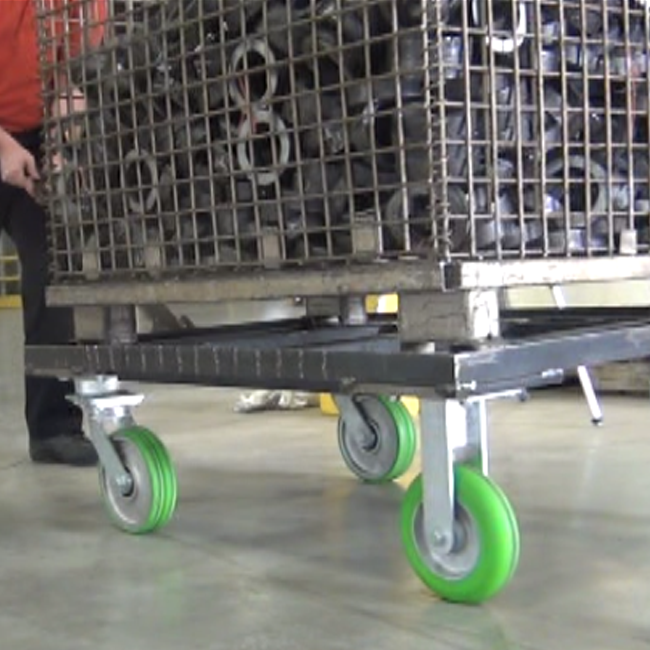

If you read the title of this blog and thought that this was going to be an article about moving parts with AGV’s (automated guided vehicles) or incorporating more automation into the process, I assure you that isn’t the case.
What I want to discuss are the different Caster Concept designs that help our customers move more with the same amount of carts or manpower you already have. In the manufacturing world, schedules run tight, and ensuring the raw material line side is a top priority.
Many would consider doubling their fleet size in order to double the amount of material being moved throughout the day. This idea is driven by OSHA’s guidelines of 44 lbs. of push or pull force with using two hands to push/pull a cart. Caster Concepts is redefining what cart weights are acceptable to achieve this feat.
In the past, and possibly as many of you reading this would say, typically carts will range from 1,200-1,500 lbs. in order to try and stay within this limit of 44 lbs. Most of you probably had to trial casters in order to make sure they met this standard. At Caster Concepts, we are challenging the traditional cart weight and are proving that these can be increased to 2,500-3,000 lbs. while still staying within the 44 lbs. push/pull force area. The caster design and wheel makeup should be what you are questioning if you are needing to increase the weight on your carts.
While you may get told something different when talking with a caster distributor or another caster MFG altogether, this is obtainable. This goes hand in hand with our video on youtube, What impacts push force on my caster? | Caster Concepts – YouTube . If you have not watched any of our educational caster information that we have listed in our learning center, it’s a good place to start. It will help you decide what caster design can help you maintain current push forces while testing the limits of how much material is moved.
I do not think that there is one specific caster design that will work universally, or else someone would be rich somewhere in the world — or more than likely living on an island! It truly depends on the duty cycle and speed as well; each application is unique no matter how standard or simple you may think it is. You can reach out to a sales rep, and we encourage you to do some caster research on our site to determine what will work best for your application.